When you think of Black Friday, you might think of getting trampled at Walmart trying to snag a half-price TV or the latest toy phenom for your kids. (“Baby Yoda purchase, you must.”) This year is a bit different though—COVID-19 has upended the economy and new social distancing measures have changed the in-person shopping experience.
Editor’s note: Finding yourself here in 2021? Wait—isn’t this post about 2020? Well, yes, but recent reports show that what we saw last year is still very much valid in 2021, with online sales continuing to trend upward. Wanna get ready for Black Friday and Cyber Monday? Read on. You’re on the right track.
Some experts say the writing is already on the wall: Black Friday, the most important shopping day of the year, is either dying or already dead. Nobody wants a crowd of people rushing around their store in 2020, and small businesses already feeling the pinch from months of lower sales volumes aren’t gonna be able to offer the same level of discounts.
Online shopping though? That’s a completely different story.
This Black Friday will be the largest yet for e-commerce. Mark my words.— Patrick Campbell (@Patticus) September 2, 2020
For ecommerce and DTC brands, Black Friday and Cyber Monday 2020 are poised to be bigger and more competitive than ever before. Not only have online shopping sales doubled during the pandemic, research from Google shows that 69% of holiday shoppers will be doing more shopping online this year. Plus, a whopping 77% of people say they will be browsing for more gift ideas on the internet instead of in-store. Turns out, folks are happy to stay home in their turkey stretch pants and see what’s available, rather than line up outside in the freezing cold at 5 AM and hope they get a doorbuster deal.
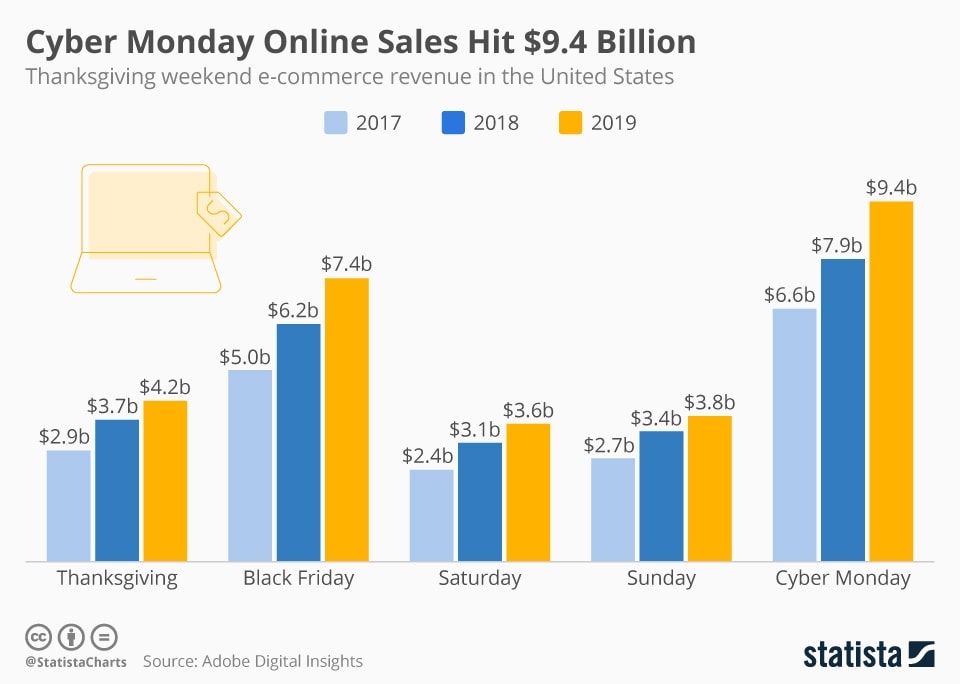
This is a major opportunity for small and medium-sized businesses that are already set up to sell online. Shoppers will be actively looking for deals in categories like clothing, health, beauty, food, electronics, and subscription services—and they won’t just be looking on Amazon, either. This year, more people are showing an openness to try new brands, experiment with new products, and make an effort to shop local.

But you can’t just put out a simple discount and hope online shoppers take notice. To get the most out of this Black Friday weekend (which is coming up fast, btw!), you need to set up meaningful deals that are worthwhile for your customers, craft compelling messaging to stand out from the competition, and use psychological triggers to get more clicks. This article is the perfect read for marketers who are still working on their strategy for the big weekend, or still mulling over which deal they want to promote. Use these tips from the leading ecommerce experts to develop your game plan and boost your online sales.
Looking for more tips? Check out how to create smarter ecommerce landing pages for the holidays, including expert advice on how to write copy for gift-givers and use the holiday rush to your advantage.
8 Expert Tips to Win More Online Sales on Black Friday and Cyber Monday
1. Set Up Clear Communication on Deals
Like pumpkin spice lattes, every year the Black Friday deals tend to start a little bit earlier. This year is no exception, with brands like Home Depot, Walmart, and Macy’s having already announced their sales would be starting as early as October (well over a month before the actual calendar date).
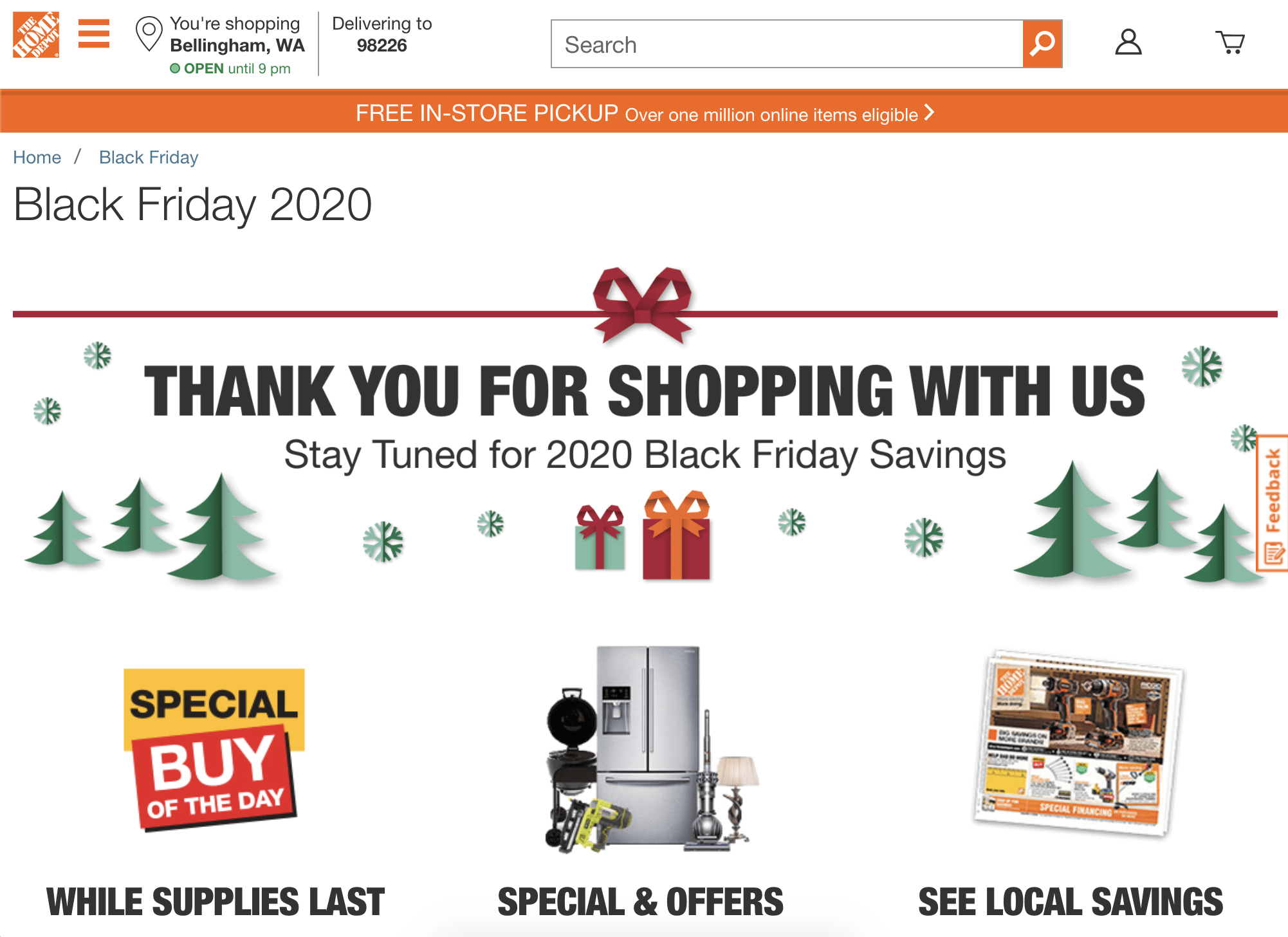
Ben Jabbawy, Founder and CEO of Privy, says that while this puts less pressure on the Black Friday weekend itself, it also creates a new challenge for marketers. Online shoppers will be less likely to make a purchase if they think a better deal is still coming down the pipe.

What was all concentrated on one day will now spread out and continue to grow. Because of that, I think the consumer is going to be more numb and confused about Black Friday. If everyone’s emailing their customers earlier this year to try to get the wallet share—as a consumer, I’m like, well, should I wait? Or should I buy now?
Ben suggests the best way to reassure your customers is to be upfront and clear with your communication. Having a popup or sticky bar show up on your website can help you neatly explain what deals will be available, and when they expire.

My common advice is just don’t make the customer think. Immediately greet all traffic in the holiday season with a notification or a screen takeover. Reduce friction and just make it clear what you’re doing up front. Clear communication.
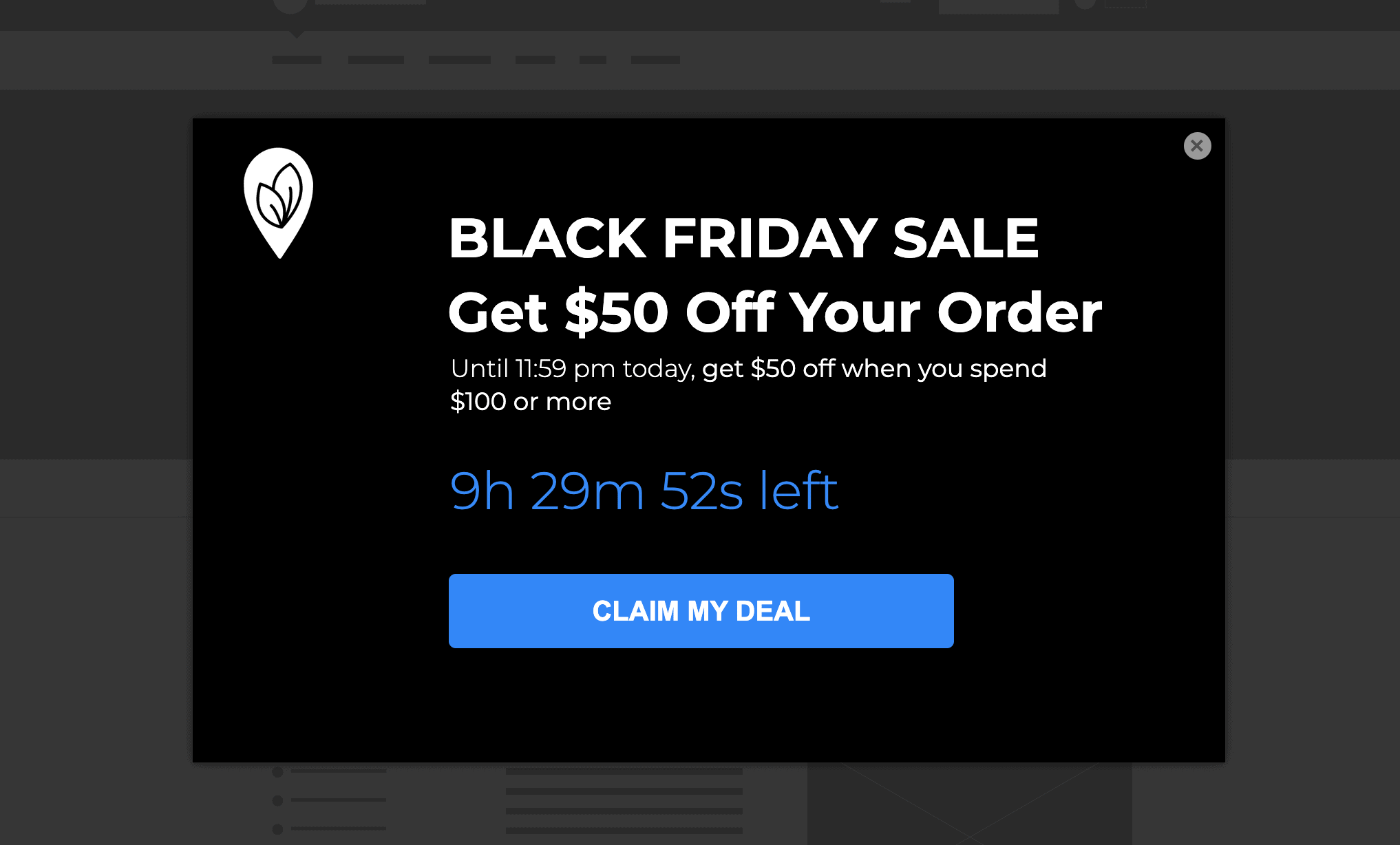
2. Use Dollars Off, Not Percentages
Discounts are the most common perk associated with online shopping during Black Friday weekend. (Well, that and cans of unicorn meat. Yum.) It’s not uncommon to see brands offer site-wide discounts like “40% OFF ALL PURCHASES” or global coupon codes that visitors can apply at checkout.
But Patrick Campbell, CEO of Profitwell, says that in order for your discount to hit the sweet spot it needs to be framed so customers can visualize how much cash they’re actually saving. This is especially important during COVID-19, when so many people are being more prudent with their purchasing.

With discounts, the instinct is to do a percentage off. But it’s almost always better to use a physical dollar amount off (or a buy one, get one free) instead. Percentages tend to work worse unless you’re doing a really high amount, like 70% off. The reason is the human brain… I can very quickly and very concretely imagine a hundred dollars. Whereas a percentage is harder.
This example from Belk shows how confusing it can be to shoppers when you offer a percentage off instead of an actual dollar amount. Not only am I unsure how much money I’m saving here, but I’m also unclear how to even claim this offer on their website. (It says “Get coupon” in the top banner, but then “Doorbuster prices so low you don’t need a coupon!” below. You’re tearing me apart, Belk!)
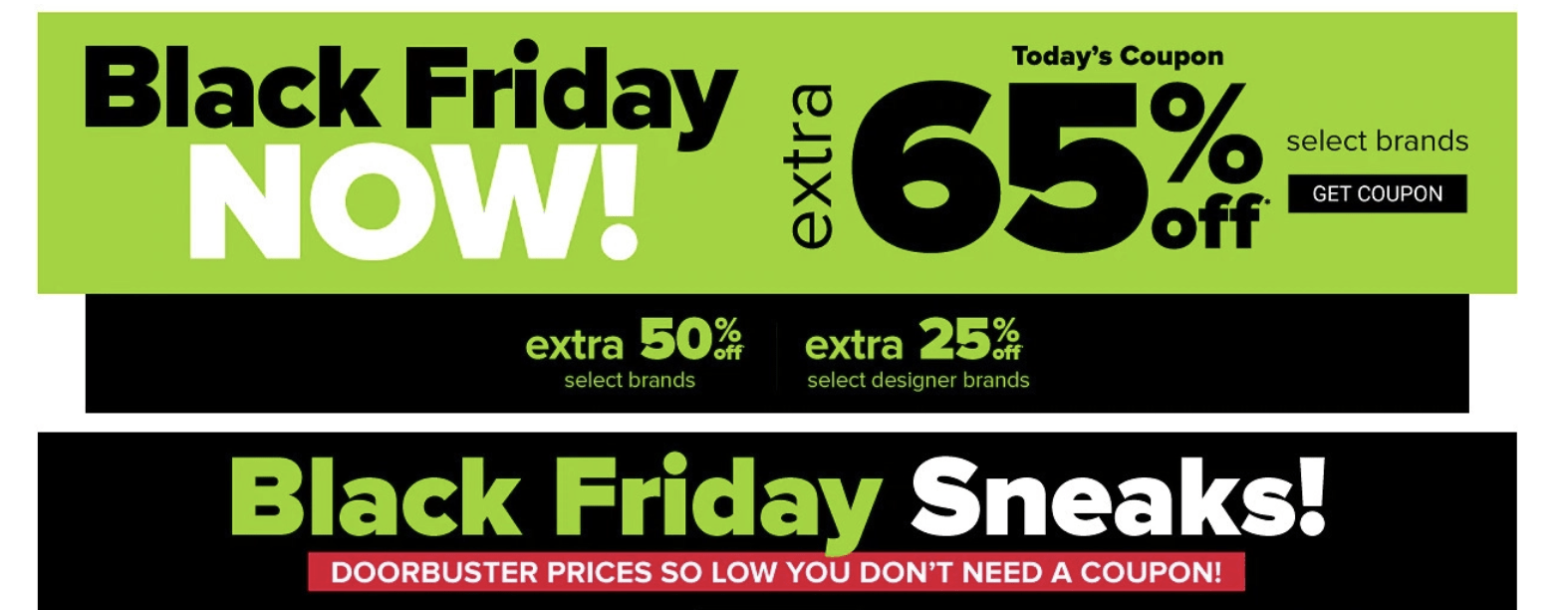
Compare this to a deal where the savings are crystal-clear, like this one from a Black Friday landing page for YogaDownload built using Unbounce. You see the price you’re going to pay for each product, then the original price crossed out, and then the actual savings in the CTA buttons. No confusion here—which also means no reason to click away.
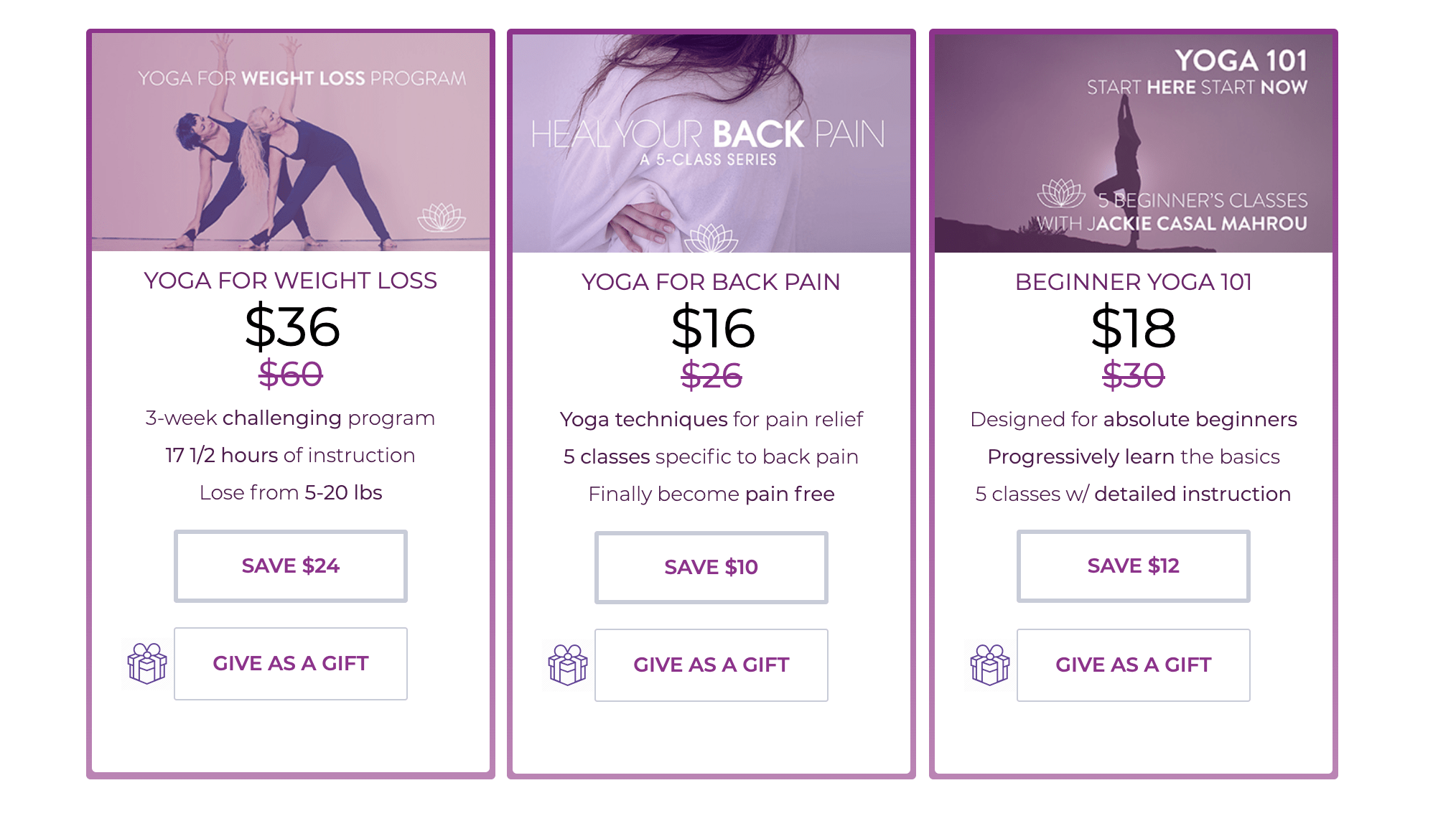
3. Offer Free Gifts or Bundles
It might be challenging for small businesses to match the steep discounts large retailers are offering this year. So rather than try to beat them in a race to the bottom, there are other types of promotions you might want to consider to attract customers.
Patrick Campbel says free gifts and bundles are often more attractive to shoppers—especially if you’re running a subscription service where you’re trying to hook people into trying more over a longer period of time.

Think about bundling stuff more than just using the sledgehammer of a discount. If you’re a subscription toothbrush company and you offer an extra tube of toothpaste, those customers retain at a 15-20% higher rate. That means their subscriptions are basically around for an extra month or two compared to your other types of customers. They’re more ingrained within your brand and they’re using more of your products, which gives you more surface area to sell them more.
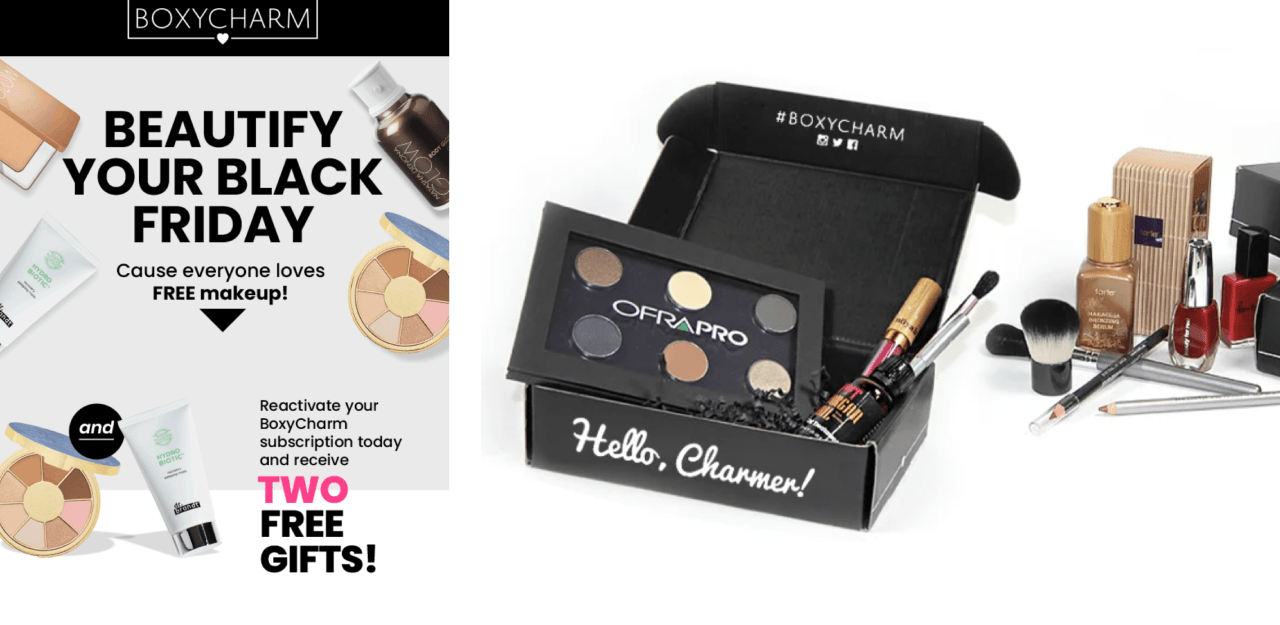
This strategy has also worked like gangbusters for food and nutrition companies. Nik Sharma, CEO of Sharma Brands, says bundling can be a really effective way to increase your average order value (AOV) while also getting customers to try a broader range of products.

In 2017, we created this great value deal for Hint Water that was basically nine cases of water for $99. So instead of an AOV of maybe two or three cases, we were able to hit much higher revenue goals. And because we bundled pre-selected flavors, we were able to introduce new flavors to the customer as well.
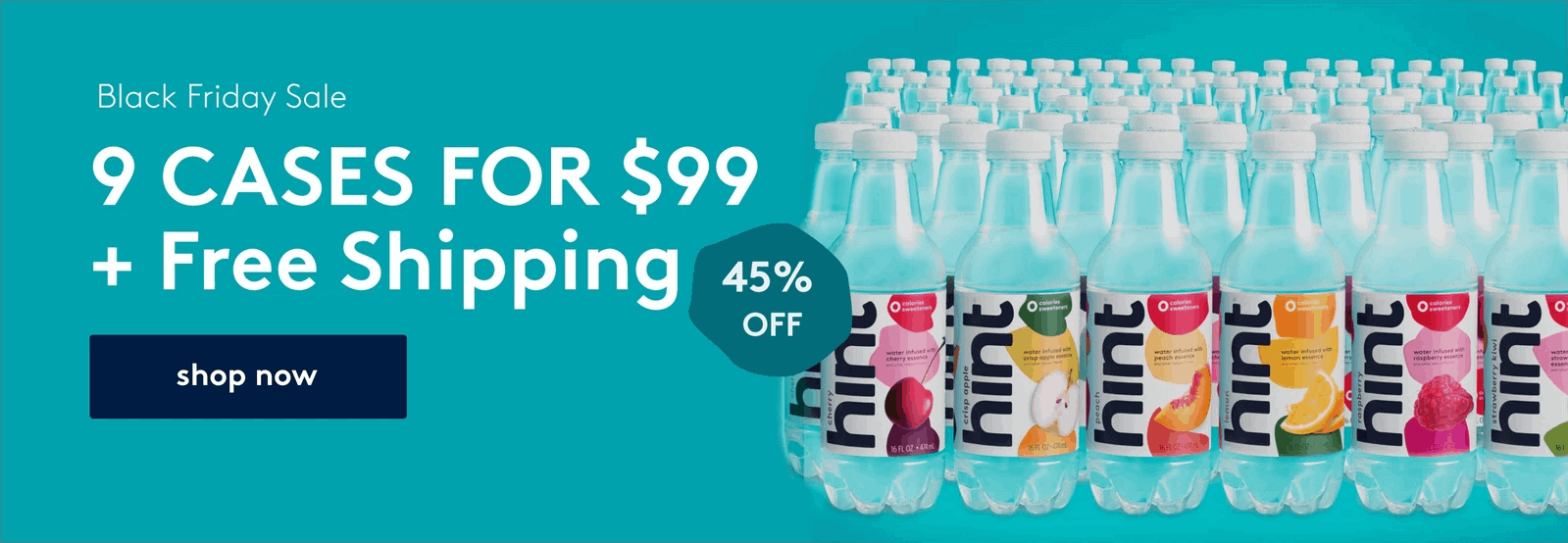
4. Make a Personal Connection with Customers
COVID-19 has changed the world in so many large ways that we’re still coming to terms with many of its effects. Millions of people have lost their jobs, and over 150,000 small businesses have closed since the beginning of the pandemic. For many entrepreneurs, this means it’s going to be very difficult to offer discounts or free items over the Black Friday weekend.
But that doesn’t mean you’re out of options. Vivian Kaye, Founder and CEO of KinkyCurlyYaki, says there are other ways to show your appreciation for shoppers during these difficult times.

COVID has made everyone feel lonely and isolated. Try doing things that make your customer really feel like you’re paying attention and you did this just for them. Remind them that you are also a human being—you are not Amazon. Customers will remember those personal touches, like a handwritten note you include with their package.
This is something the Vanness Pen Shop does on the regular when they ship out orders, and their customers absolutely take notice. If you’re able to interact in ways the impersonal big box stores will never be able to match, you’ll be able to build stronger long-term relationships with shoppers.
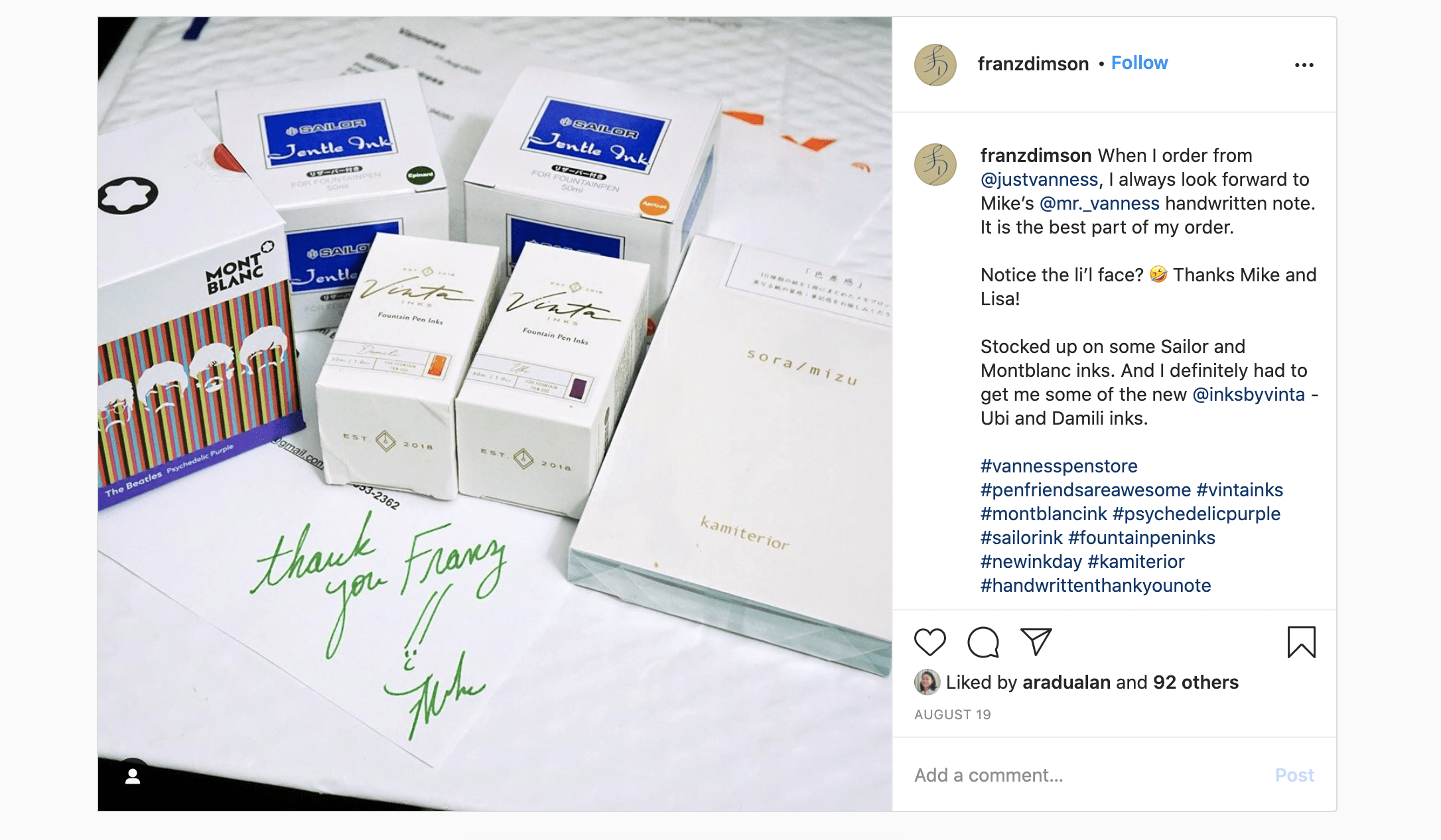
5. Don’t Overextend Your Offers
While it can be tempting to run your Black Friday promo from October all the way to the end of December, it’s probably not the best look for your brand. Not only does this create less urgency for the deal, it can also reflect poorly on your offer if you keep “extending” the sale. Val Geisler, CEO of Fix My Churn, pointed out on Twitter what happens when you repeatedly try to push the same deal to shoppers.
How To Become A Discount Brand In 10 Emails Or Less: pic.twitter.com/xeialSKfdc— Val Geisler 🖤🏳️🌈💌 (@lovevalgeisler) February 18, 2020
So how do you maximize your sales throughout the holiday season without annoying your customers or diluting your brand? Nik Sharma suggests mixing up different deals and products on different days of the weekend to keep shoppers curious and interested.

I always say go for high AOV on Black Friday, go for something that drives volume on Cyber Monday, and give back to the community on Giving Tuesday. You don’t want to always have the same thing, otherwise, people aren’t going to be inclined to come back.”
6. Create a Unique Campaign Message
Everybody loves a great deal. But there are going to be hundreds of thousands of discounts competing for attention on Black Friday weekend. How does your small business get the word out and stand apart from the competition?
This is where it helps to have a compelling message for your campaign. Jeremy Cai, CEO of Italic, says that if you’re able to say something unique and connect it back to your company values, you’ll be able to create a deeper connection with shoppers. It’s a strategy that has worked incredibly well in the clothing and apparel industries…

Cut through the noise with a compelling message that’s unique to your brand. Our team always references the ad Patagonia ran in the New York Times a few years back on Black Friday: it featured a Patagonia jacket and the headline ‘DON’T BUY THIS JACKET.’ The ad wasn’t successful in its intended purpose—(sales rose 30% following the campaign)—but it raised awareness of a serious problem, excess consumerism, and reinforced Patagonia’s standing as a values-driven brand.
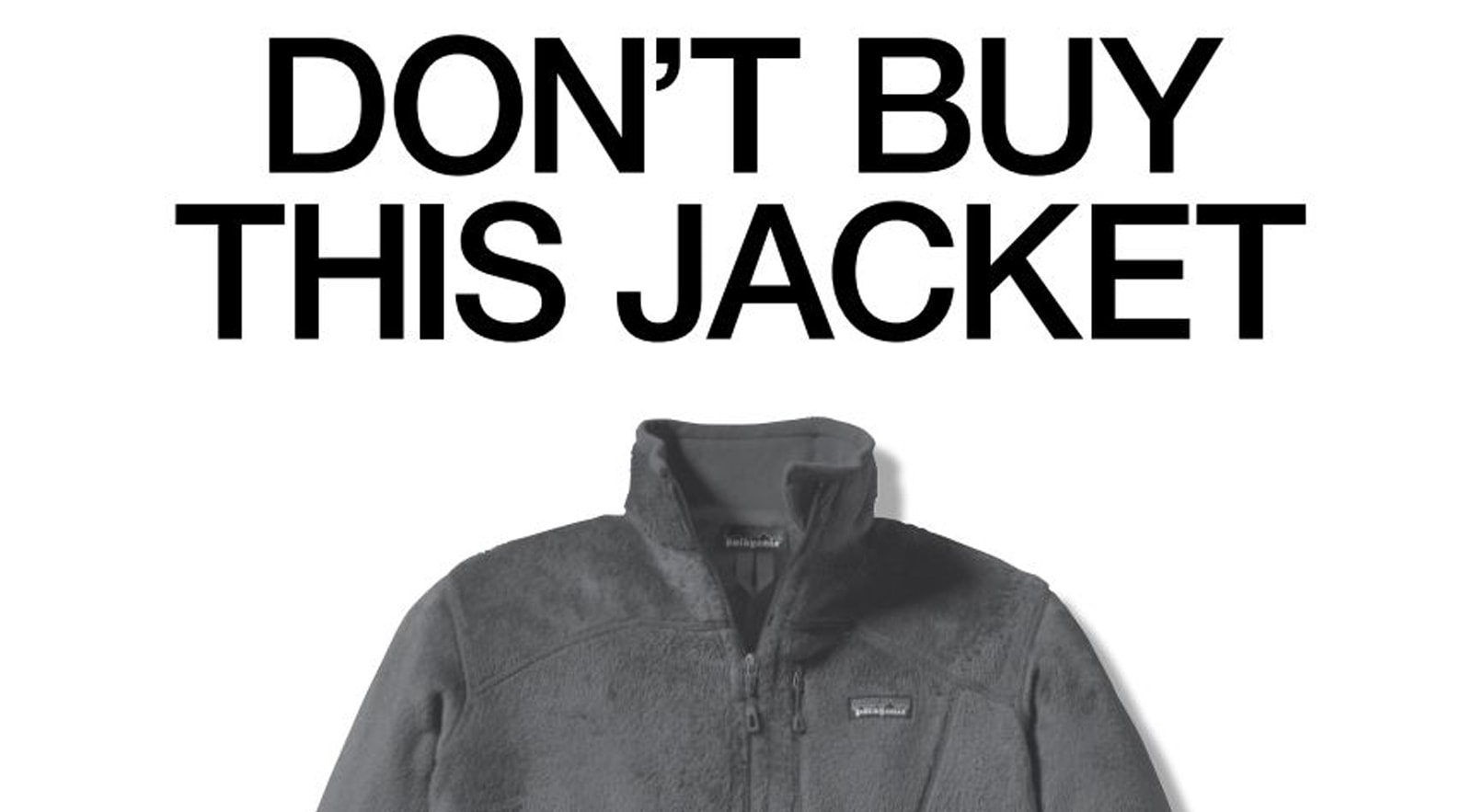
7. Launch an Exclusive or Timed Product
Another tactic that has worked well (especially for clothing and apparel companies) has been to drop exclusive products during the Black Friday weekend in lieu of a discount. As Ben Jabbawy explains, a limited-time offer creates a sense of urgency for shoppers who fear missing out.

There’s probably nothing better than an exclusive product launch. We’ve seen brands like Allbirds do this in the past where you know that they’re building hype leading up to it, they’re teasing out their new colors or their new material weeks ahead of the product launch. And they’re letting you know specifically that they’re launching a new product on this day and that this is likely the only day that you can get it. That’s actually a great hook.
You don’t necessarily have to go all Beyoncé and keep your launch a surprise, either. Build up the suspense with a pre-launch landing page where customers can enter their email address ahead of time to be first in line for the new product.

8. Create Focus on the Deal
The ideal customer on Black Friday weekend will give you their full attention. They’re immediately interested in your offer, and they’re waiting cash in hand—ready to place an order.
That’s something that almost never happens. In fact, most shoppers during this holiday weekend are as distracted as a teenager texting their BFF (Black Friday Fam) at the dinner table. There’s so much going on, so many emails coming in from different brands, and so much noise for them to filter out. You’re lucky if you get a few minutes of their attention, let alone enough time for a click-through.
This is why Nik Sharma says the number one way to get more online sales during this weekend is to use a landing page with zero distractions.

On Black Friday, people want to shop around. Help narrow down their opportunities by building landing pages for your offer. That way, you’re not worried about people getting derailed from the page or checking out other pieces of the site. Put everything they need on that one page and you’ll increase your conversion rate.
But how much difference can a landing page actually make? Nik says directing traffic from your email list, social media ads, or PPC ads to a landing page instead of a website can have a huge impact on your final sales numbers.

If you look at an on-site conversion rate, you might be hovering between 1-4% on average. But if you look at a landing page click-through to a cart… we’ve seen anywhere from 18-25% end up right in the cart from getting to the page.
Get Ready for an Unprecedented Black Friday Weekend
No matter what happens this Black Friday weekend, one thing is for sure: it’s going to be very different. More shoppers will be staying at home and doing their shopping online, which means marketers have to be ready with their most competitive deals, compelling messaging, and optimized landing pages. (Also, you’re going to need coffee. Lots of coffee.)
Check out our ecommerce lookbook for more campaign inspiration, read more about how to create smarter landing pages for the holidays, or get started now with your free 14-day trial of Unbounce and over 100+ high-converting landing page templates.

![[Build – MOFU – Ecommerce] Landing Page Templates – V1](https://unbounce.com/photos/Frame-23@2x.png)
